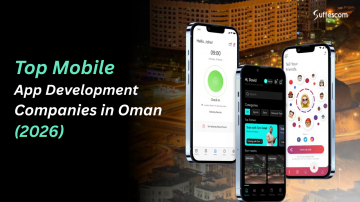10 Best Practices for Successful Implementation of AI Integration

When we consider artificial intelligence (AI), two thoughts immediately come to mind: its vast potential and the hype surrounding it. The current and emerging AI tools are indeed transformative; they are revolutionizing businesses, improving decision-making, and driving unprecedented levels of efficiency. For the quick facts, it projected that the value would increase to more than 107.5 billion by 2028.
However, deciding how to cut through the ever-existing hype and use these tools to create actual value for your business demands a practical AI implementation strategy to identify what to build, how to make it, and how to manage it once it is built. This approach ensures that AI initiatives align with your organizational plans, are effectively organized, and are ethically deployed.
So, how do you begin building an AI strategy tailored to your business? How do you incorporate your goals and capabilities through AI integration services?
We've developed a process to help you build an AI strategy tailored to your organization. We start with a basic understanding of your business goals and finish with measuring how each AI project AI impacted those goals. Along the way, we recognize and prioritize use cases, consider how to create or skill up your team, select technologies, and establish a governance framework.
10 Steps for Seamless AI Integration

1: Start With the Fundamentals
Your AI strategy must sustain your business's goals! A successful AI project will directly support those goals or help address and reduce the impact of specific challenges. You must understand this to identify, prioritize, build, and measure AI initiatives.
Start by creating documentation of those business goals and challenges. Discuss them with executive leadership and key business and IT stakeholders to ensure you understand how they plan on accomplishing the goals and addressing the challenges.
You can initiate this process by adequately documenting your business goals and challenges. Meet with the board of directors and executive leadership to discuss the AI strategy for business and its future outcomes. Prioritize challenges AI can quickly solve in operations or any other business process. Carefully note “If we can statements” to address the desire. However, you can get professional assistance from artificial intelligence integration service providers in your area or globally.
This step builds the insight necessary to create a vision and secure process alignment. The vision creates a compelling picture of how AI will transform your business while ensuring the leadership's commitment to driving AI initiatives. This will assist you in developing alignment throughout the organization.

2: Understand Your Starting Point
Next, understand your enterprise's current state of AI and data capabilities. You are trying to understand items such as:
- Current AI projects, tools, and expertise
- Data sources, experts, and capabilities, including data sources, reports, core applications, data warehouses, etc.
- Cloud platforms such as AWS, Azure, and GCP are currently used.
- Individuals or teams with experience in AI integration.
Knowing your current capabilities, skills, and data lets you understand the projects you can tackle now and where your organization requires growth before addressing more complicated challenges.
3: Define your AI Vision and Goals
We entered the mobile era 15 years ago, and every company had to have a mobile app. However, it didn’t matter whether the app provided value to the user or brought customer satisfaction. Millions of dollars were indulged and wasted in developing useless mobile apps.
To avoid this, your company requires you to clearly articulate a vision of what AI means for your organization and how it will help you reach the business goals documented in Step 1. Will you use AI to transform your industry? Will it make your employees more efficient? Will it help you attract new customers or increase sales to existing customers? Will AI integration service help you reduce operational costs?
To eliminate these activities, you must clarify what AI means to your organization and how it will help you reach the business goals documented earlier. Will it transform your business? Will it help you increase your sales? Will it make your staff more efficient? Will it reduce your operational costs?
You must ensure that your project will clearly define how AI can help you meet your goals and establish long-term objectives aligning with business goals. After having a perfectly aligned AI vision, share it with other stakeholders and executives.
Empower Your Business With AI Integration Services!
Revolutionize your operations with customized AI solutions to boost efficiency, optimize workflows, and drive innovation. Start your transformation today!
4: Create Your Use Cases
Once you’ve decided everything about your AI vision, you must quickly determine how you will get there. Before implementing anything, just evaluate its feasibility and cost and compare the estimated benefits with its expenses. Keep in mind that High Value, Low Effort = Quick win! Next, you must analyze the project's low to high-cost use cases. Also, create measurable benefits and prioritize what you need immediately.
Now, you have a handful of high-priority use cases and evaluate their difficulty while implementing each. How much will it cost? What would be the right technology for implementation? What skills and data are required for implementation? Check what it will need to build, deploy, and maintain the project. How many additional sales will it be able to grab? How to reduce its total cost? How will you measure the upcoming benefits of hiring any artificial intelligence integration service?
This practice will help you picture the sweet spot of technically feasible with a reasonable development cost and a substantial impact on the business.
5: Grow Your AI Team
Once you know the projects you will work on, it's time to consider your team. Recognize the skills required and plan for hiring or training existing employees. Consider when exactly you need those skills and when you can hire a team that provides AI integration services. Finally, think about how you want to foster knowledge sharing and excitement about AI within your organization. We recommend you to implement one of the two methods:
- AI center of excellence: Create groups within a company typically aimed at knowledge sharing and standardizing delivery through best practices. They would be sponsored by organization and organized by designated personnel.
- AI Community of Practice: Less formal; these groups typically are self-organized and focus more on generating excitement. They usually have more "show and tell" and "did you hear?" content than Centers of Excellence.
6: Design Your Supporting Technical and Data Infrastructure
Implement the right AI technologies with the help of an artificial intelligence integration service provider that can positively impact your AI development strategy. Factors such as your team's expertise, tools or platforms currently used, and the initiatives you want to accomplish will drive these decisions. Hiring AI integration experts to assist with these evaluations.
Just remember, all AI initiates are dependent on data. You should recognize other initiatives, especially around data quality and availability, to get assistance in your AI development. Is your data easily accessible? Is the quality of data high?
7: Create Your AI Roadmap
The creation of an AI roadmap needs collaborative efforts. Follow these steps together with your business and IT colleagues:
- Step 1: Identify the Core Capabilities: Prioritize the capabilities for investment and migration based on the earlier capability assessment.
- Step 2: Assess AI Readiness: There are numerous business experts or even capability owners in the company for each capability in the form of requirements.
- Step 3: Align AI Initiatives: You must ensure that the AI projects you invest in align with these core capabilities to enhance and leverage the organization's strengths.
- Step 4: Prioritize Investments: Based on alignment and enthusiasm, prioritize AI initiatives that are likely to be delivered immediately and are feasible to implement in terms of cost.
- Step 5: Develop an AI Roadmap: Create a detailed plan that outlines the milestones and sequence of AI projects, resources needed, such as the AI integration service provider team, timelines and milestones of the project, and its expected outcomes, providing a structured and strategic direction to AI adoption.

8: Establish Governance and Ethics
No one wants to end up in the news due to unwanted consequences of their AI project. Establish a governance and ethics framework early in your AI journey to prevent hurdles. A governance framework with processes, guidance, and a cross-functional AI integration team provides the double (and triple) check needed to align your AI projects with your corporate values.
For each proposed project, the governance board should consider:
- Is the project aligned ethically with your organizational values?
- Does the project have significance for the organization that overshadows the cost? Value should include not just financial return but learning and capability creation, while cost should consist of development, ongoing maintenance, and opportunity costs.
- How does the project correspond with other AI proposals? Which AI integration service will provide the most value for the company based on the investment?
9: Develop a Comprehensive Change Management
AI is new, and an effective change management plan will reduce organizational resistance. First, incorporate a proper communication plan to inform stakeholders about changes in any process. Then, training and support will be provided for employees who will be asked to adapt to AI-driven changes. Keep your AI integration team in the loop while implementing any process changes.
10: Continues Monitoring and Improvement
Evolving with the technologies and maintaining system performance requires continuous attention. Implement processes for managing AI model drift and stay updated with rapidly evolving AI technologies. Monitor every objective you created in the document earlier and measure those with the current scenarios. KPIs should work as per the expectations from the use cases as they are being developed. Ensure deployment plans include monitoring and checkpoints where ROI data is figured out.
Additionally, create a community and engage with feedback to stay updated about new bugs and continuously address them to improve and increase customer satisfaction.
Elevate Your Business with Our AI-driven Solutions
Implement AI-driven strategies that elevate your business performance from automation to analytics. Let's build a brighter future together!
Conclusion
Developing an AI strategy is crucial for businesses to realize AI's full potential, drive innovation efficiency, and build a competitive advantage while managing the risks inherent in any new technology. A thoroughly researched AI implementation strategy can allow companies to cut through the hype and achieve sustainable results in this evolving AI-driven world.
Interested in how Suffescom Solutions helps you create a successful AI strategy? Contact us today to speak to an expert!
FAQs
1. What is AI integration, and why is it important for businesses?
AI integration implants artificial intelligence technologies into business operations to improve their efficiency, speed up the decision-making process, and evolve with innovation. Additionally, it helps companies stay ahead of market competition and adapt to a rapidly changing digital landscape.
2. How do AI integration services benefit organizations of different sizes?
AI integration services are scalable and can be customized to meet any organization's specific needs. These integrations can help improve our business operations by automating manual redundant tasks.
3. Can AI integration be customized to fit my specific business needs?
Yes, AI integration services are highly customized to satisfy your unique needs.
4. What metrics should I use to measure the success of AI projects?
Key metrics are ROI, business operational efficiency, cost reductions, user experience, customer satisfaction, etc.
5. Can existing systems and tools be integrated with new AI solutions?
Yes, AI solutions and tools can be implemented with existing business systems.








